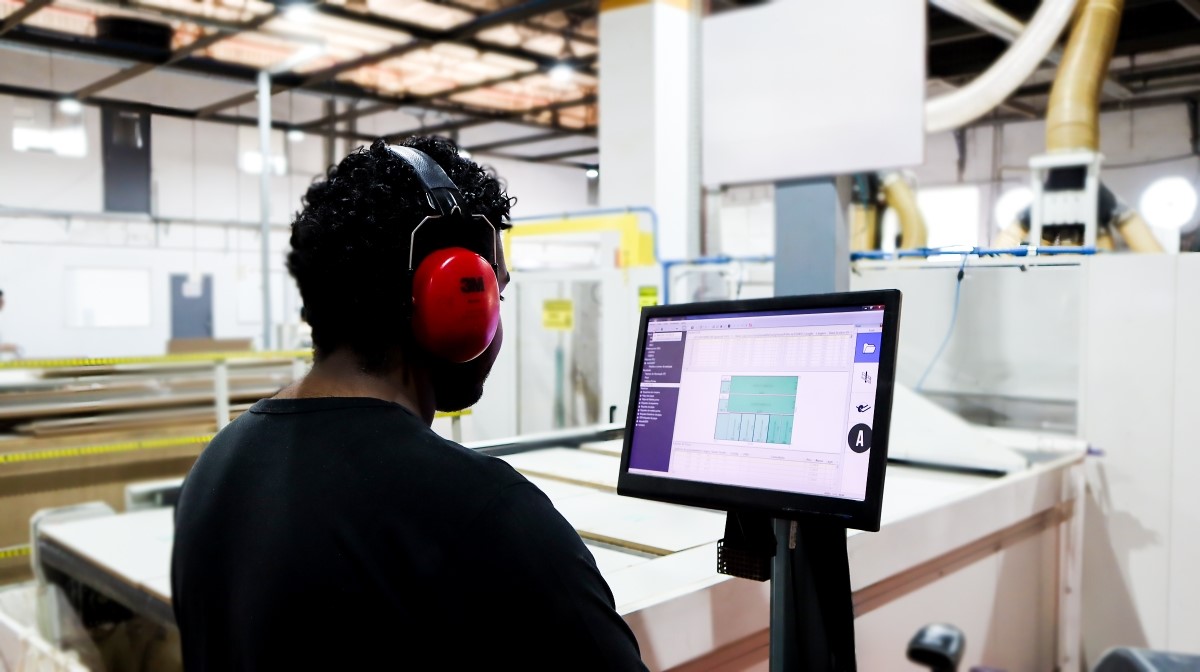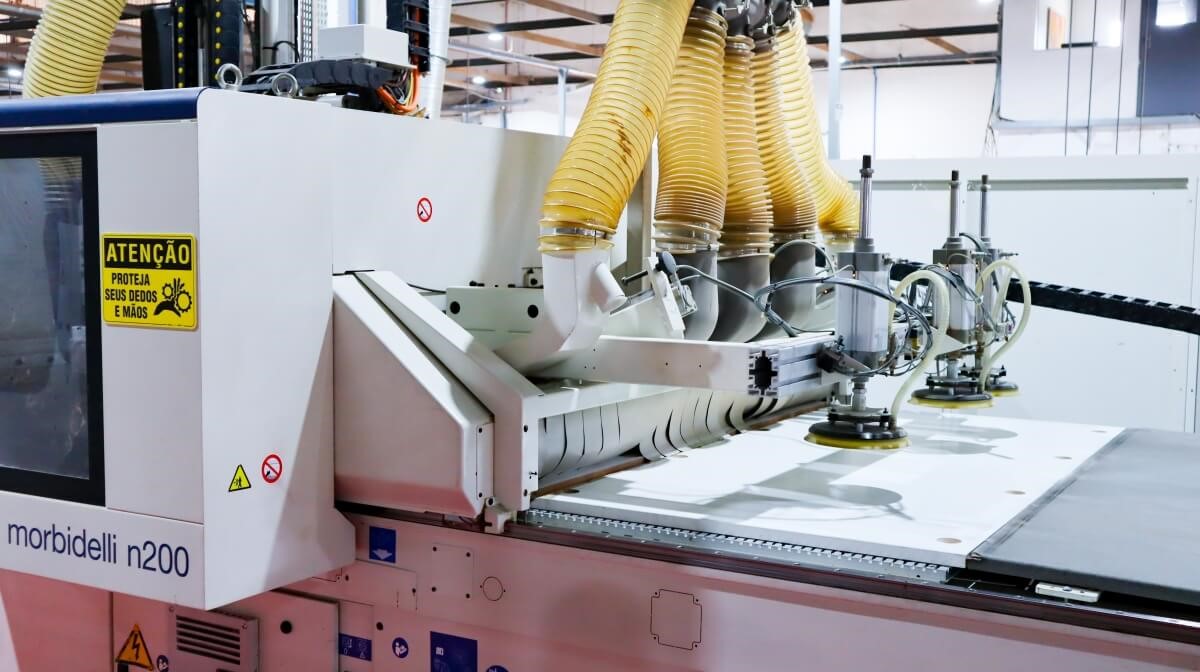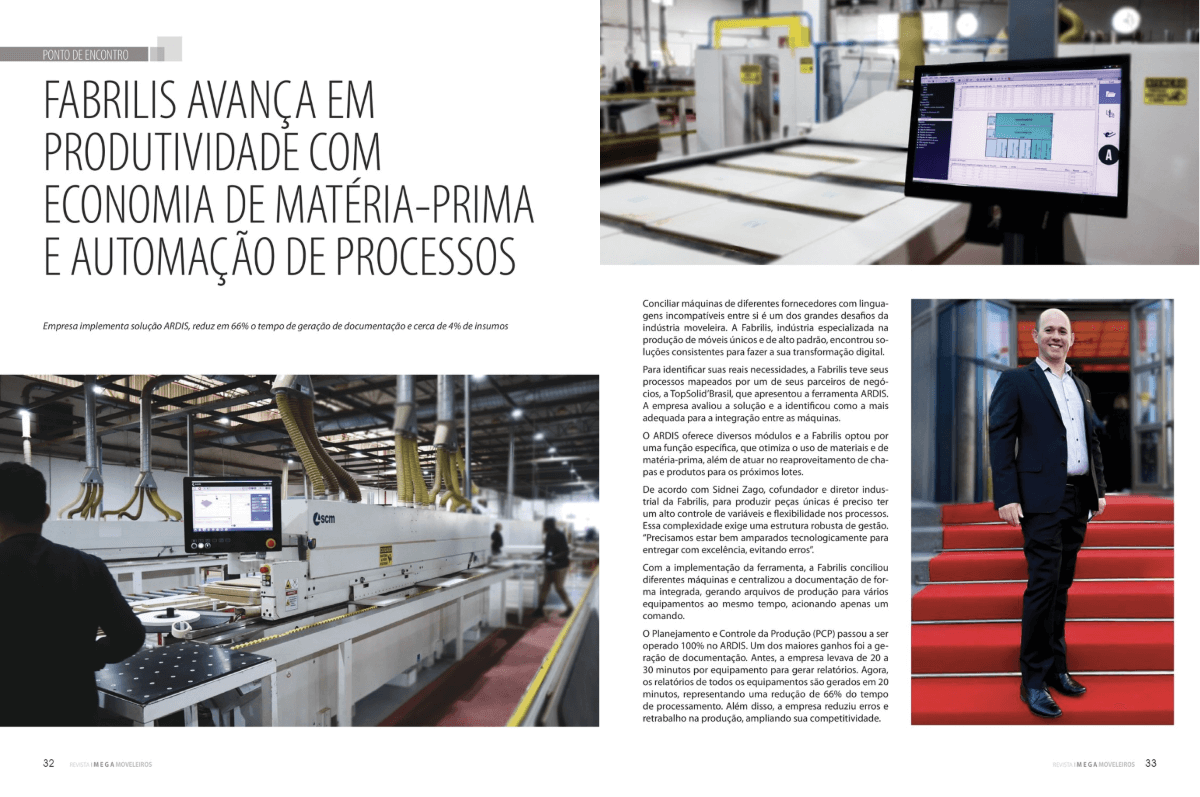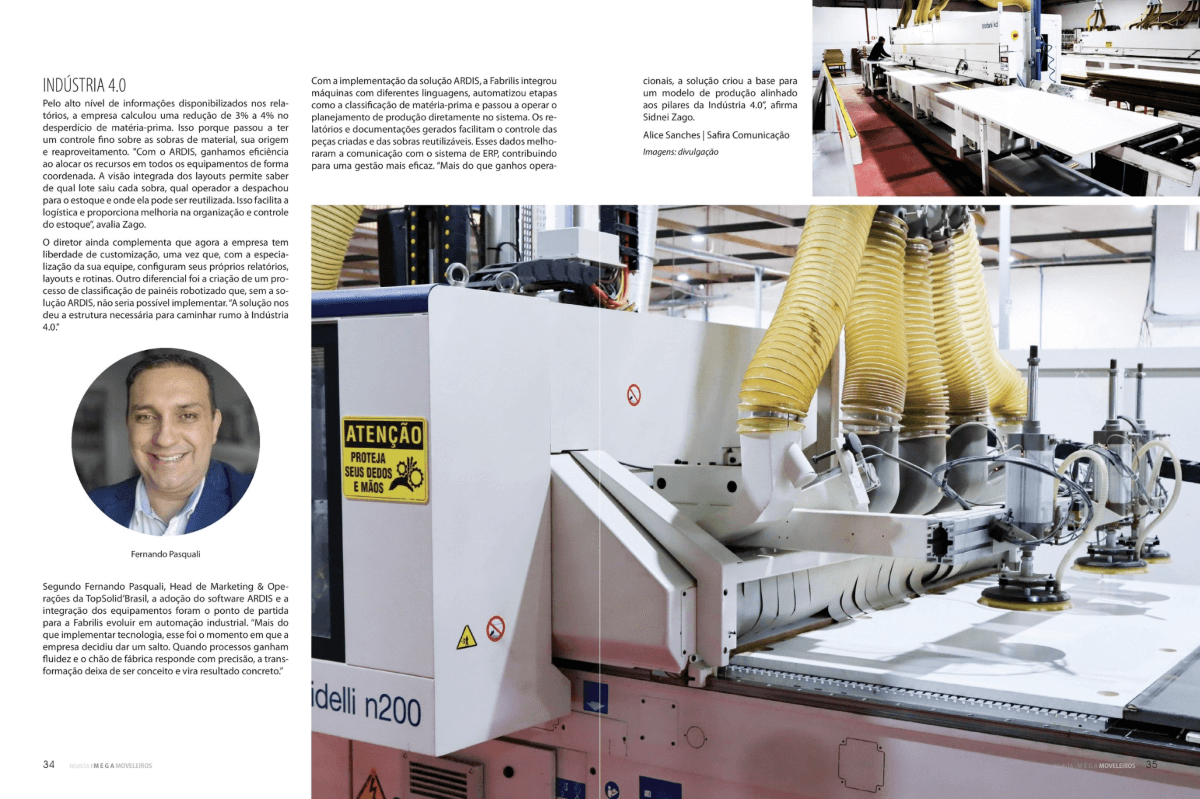
Another story of digital transformation makes the headlines in the specialized press. Fabrilis, a reference in the manufacturing of high-end custom furniture, was featured in Megamoveleiros magazine for its successful journey towards Industry 4.0, supported by the ARDIS® solution.
The article highlights how the company overcame the challenge of integrating machines from different manufacturers and automating previously manual processes, achieving concrete gains in efficiency, agility, and raw material control.
With the adoption of ARDIS®, documentation generation accelerated by 66% and material waste was reduced by up to 4%, thanks to the strategic use of data and reusable leftovers.

Reconciling machines from different suppliers with incompatible languages is one of the greatest challenges in the furniture industry. At Fabrilis, a company specialized in producing unique, high-end furniture, this was not different but the company found its path to digital transformation.
To identify its real needs, Fabrilis had its processes mapped by one of its business partners, TopSolid’Brasil, which also presented the potential of the ARDIS® solution. At that moment, the company identified the tool as the most suitable for integrating its machines.
Although ARDIS® offers several modules, Fabrilis chose a specific function that optimizes material usage and raw material management, while enabling the reuse of panels and offcuts for future batches.
According to Sidnei Zago, co-founder and industrial director of Fabrilis, producing unique pieces requires strong control of variables and flexibility in processes. This complexity demands a robust management structure. He used to say:
“There are too many things that could go wrong, which is why we need to be well supported by technology to deliver with excellence.”

With the implementation of ARDIS®, Fabrilis controls different types of machines and centralizes documentation in an integrated way, generating production files for multiple machines simultaneously with just one command.
Production Planning and Control (PPC) is now fully operated within ARDIS®. One of the greatest gains was documentation generation. Previously, the company took 20 to 30 minutes per machine to generate reports. Now, reports for all machines are generated in just 20 minutes—representing a 66% reduction in processing time. Additionally, the company reduced errors and rework in production, boosting competitiveness.
Thanks to the high level of information provided in reports, the company calculated a 3% to 4% reduction in raw material waste. This is because it now has fine-grained control over material offcuts, their origin, and reuse.
"With ARDIS®, we gained efficiency by allocating resources across all equipment in a coordinated manner. The integrated layout view allows us to know from which batch each offcut came, which operator sent it to stock, and where it can be reused. This facilitates logistics and improves stock organization and control,” says the director.
He adds that the company now has customization freedom, since its specialized team can configure its own reports, layouts, and routines. Another differentiator was the creation of a robotic panel classification process, which would not have been possible without ARDIS®.
“The solution gave us the structure we needed to move towards Industry 4.0.”
According to Fernando Pasquali, Head of Marketing & Operations at TopSolid’Brasil, the adoption of ARDIS® software and machine integration was the starting point for Fabrilis to evolve in industrial automation.
“More than just implementing technology, it was the moment the company decided to take a leap. When processes gain fluidity and the shop floor responds with precision, transformation stops being a concept and becomes a concrete result.”
With the implementation of ARDIS®, Fabrilis connected machines with different languages, automated steps such as raw material classification, and began running production planning directly in the system. The generated reports and documentation facilitate control of produced parts and reusable offcuts. This data also improved communication with the ERP system, contributing to more effective management.
More than operational
gains, the solution created the foundation for a production model aligned with
the pillars of Industry 4.0.
Access the article published on pages 32 and 34 of Megamoveleiros or read the content below.

